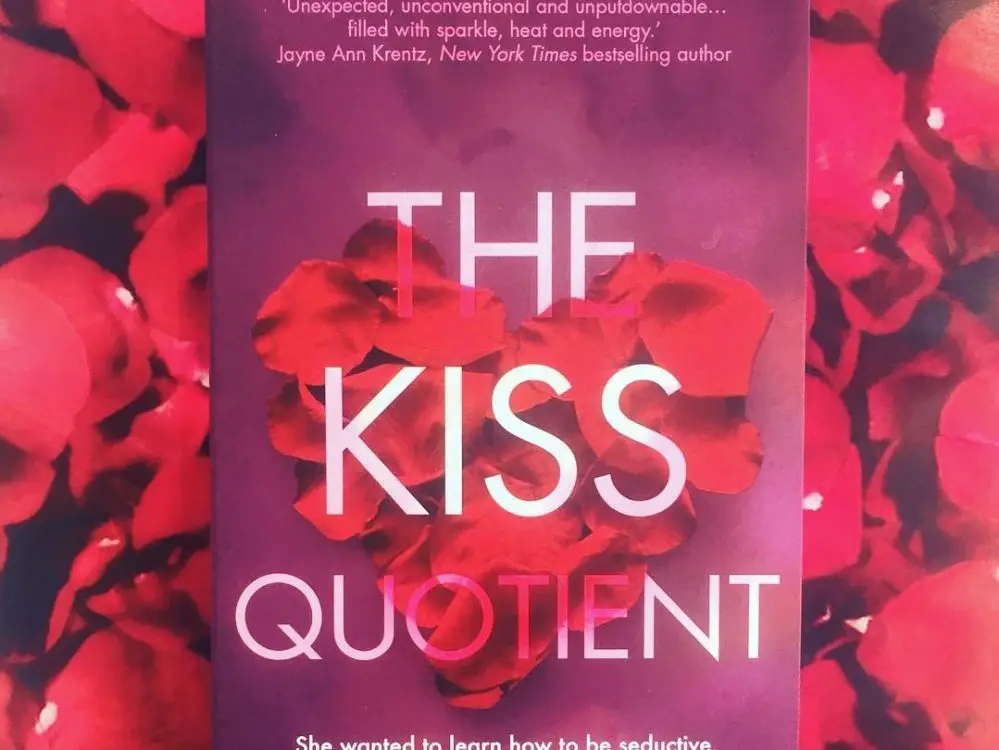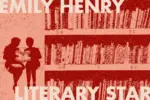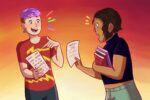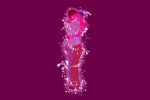Over the past few years, the entertainment industry has slowly but surely incorporated the perspectives of autistic individuals into mainstream media. TV shows like “Atypical” and “Love on the Spectrum” attempt to serve a twofold purpose: to provide an accurate portrayal of a community long misrepresented by the media, and to communicate the often unfamiliar experiences of autistic people to neurotypicals in a humanizing, realistic manner. Now, with “The Kiss Quotient,” author Helen Hoang has successfully translated those experiences into the world of an otherwise disappointingly homogenous genre — romantic fiction.
As a neurotypical — someone not on the autism spectrum — I am unable to judge the accuracy of media works and their value to the autism community. However, consuming such media has deeply enriched my own understanding of neurodiverse individuals, and shifted my perception away from their one-dimensional representations that have been long been presented by the entertainment industry.
“The Kiss Quotient” skillfully navigates the familiar triumphs and torments of romance novels, complete with enticing narration from econometrician extraordinaire Stella Lane, and her charismatic biracial male escort, Michael Phan. However, the story stands out because of Stella’s rich perspective as a multidimensional person with Asperger’s syndrome.
Stella’s Asperger’s syndrome takes neither the front seat nor the backseat throughout the novel, instead remaining a critical element of Stella’s narration. The novel’s central conflict is not Asperger’s syndrome, but rather Stella’s insecurities over a lack of sexual experience amid parental pressures for her to lock down a boyfriend. These tensions, in conjunction with Stella’s determined nature, motivate her to hire a male escort to teach her how to be good at sex.
The novel avoids perpetuating harmful stereotypes, which sometimes suggest people with autism must be intellectually disabled or unfeeling. These are decisively untrue. With each passing chapter, readers of “The Kiss Quotient” can see this for themselves, and join Stella on her emotional rollercoaster of bliss, heartbreak and everything in between. I also related to Stella’s fondness for her work, as she repeatedly expresses her devotion to analyzing consumer purchasing patterns.
“Purchases, clicks, log-in times, payment types — simple things, really. But they told her more about people than people themselves ever did. She stretched out her fingers and set them on the black ergonomic keyboard, eager to lose herself in her work,” the opening chapter reads.
Hoang, who has Asperger’s syndrome herself, paints Stella’s differences as just that — differences. Not weaknesses or failings. In fact, Michael falls in love with the differences that make Stella who she is: a brilliant, empathetic and passionate human being. Hoang’s rounded depiction of Asperger’s translates a deep understanding of its nuances to the readers, who grow to become Stella’s companions with each passing chapter. Molding Stella into a three-dimensional character, instead of an unrealistic or dehumanizing stereotype, allows Hoang to provide neurotypical readers with a wider window into the minds of individuals on the spectrum.
“When we create realistic characters, we like to create multilayered and believable, but when it comes to autism we so often see a familiar trope emerge: We either have the victim to be pitied or inspired by, or the unfeeling monster who treats people like things, or even worse, we have the reaction of everyone else to the ‘creature’, with the autistic person there as nothing more than something to trigger emotions,” said Rhi, a blogger who writes about her experiences of autism.
Hoang turns this unfortunate trope on its head with “The Kiss Quotient,” and instead found personal freedom in modeling Stella’s character after her own life.
“What started as mere research for a book became a journey of self-realization. I learned that I am not alone,” Hoang said in an author’s note at the end of the novel. “As I pursued and eventually attained a diagnosis (at age thirty-four), Stella, my autistic heroine, was born on the page. It has never been so easy for me to write a character. I knew her intimately….I didn’t have to filter my thoughts to make her socially acceptable, something I’d been unconsciously doing for ages. And this freedom allowed me to find my voice.”
In her note, Hoang also clarifies that hers and Stella’s experience of autism is just one among many and is not meant to be taken as a “standard.” This further opens the door for further representation of more perspectives from individuals on the spectrum, each with “their own valid experiences, impairments, strengths, and points of view,” Hoang said.
Even as “The Kiss Quotient” deftly navigates Stella’s Asperger’s syndrome, the novel never loses sight of its foundations built on romance. After securing the e-book from my digital library upon a friend’s recommendation, I unwittingly found myself hundreds of pages in and unable to stop, knee-deep in the dreamy orbit of Stella and Michael.
I swooned over Michael’s tattoos and charm as I read from Stella’s point of view. And Michael’s narration made my heart ache for him, as he didn’t believe he was good enough for Stella and struggled with his own emotional baggage. Thus, “The Kiss Quotient” remained deeply rooted in the mission of the romance genre, and successfully made me fall in love with love.
“Almost every autistic person alive today has lived through a world that treats them as strange, difficult, confusing. We are finally understanding that there is an enormous miscommunication going on. It is not that we are not understandable, it’s that you have misunderstood us and we have misunderstood you; we all need to bridge that gap,” Rhi said in her blog post.
Hoang, in writing a realistic autistic heroine, has slowly made strides toward bridging that gap of miscommunication between neurotypicals and neurodiverse individuals. I read Stella’s discomfort upon being unexpectedly touched, her fixation on her daily routines and her deep concentration in adjusting her speech and actions to be socially acceptable. And in hearing Stella’s thoughts in my own mind, I felt like I could understand and empathize with her, even if the novel only shows a fraction of the autistic experience presented from a single perspective.
Mainstream media still has a lot of work to do in its portrayal of autism — shows such as “The Good Doctor” and “The Big Bang Theory” are criticized for their highly limited representation of the spectrum in showing those who are high-functioning and excel in a particular field. The realities of autism are not always as positive as these shows convey. However, with the addition of more accurate and realistic representations, Hoang encourages her readers to uplift the autistic community, appreciate their differences and make progress toward bridging the divide of miscommunication that has been normalized by media.

















